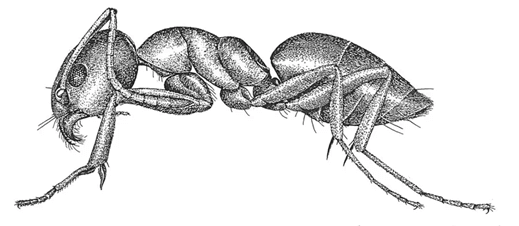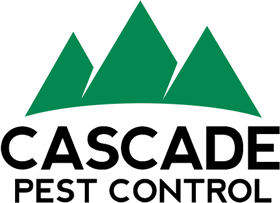Author: Kurt Treftz, Cascade Pest Control
Odorous House Ants (aka tapinoma sessile) are very common household pests. These small ants are attracted to human food, particularly sweet food, which has earned them the nickname “sugar ants”. They are found all over the continent from Canada to Mexico, so the likelihood of running into them at some point is high.
Make sure you know what you are dealing with so you can take appropriate action.
Odorous House Ants Identification 101
Odorous House Ants are a very typical ant – small, brown or black, and attracted to food. They almost seem to define the specifies.
- Small, between 1/16 – ⅛ inch
- Black or brown in color
- Monomorphic (all members are about the same size)
- Nest in large colonies with multiple queens under rocks and boards but also inside structures
- Very active and move rapidly (often in single file lines)
- Winged reproductive ants appear in May through July
- Attracted to food (particularly sweet) and moisture
- Distinctive: smell like rotten coconut when crushed (hence their name)

Odorous House Ant, Tapinoma sessile (Marion R. Smith, USDA), source: https://extension.psu.edu/odorous-house-ant
Are Odorous House Ants A Problem?
Because they are attracted to many types of food, odorous house ants come into conflict with humans – as their name suggests they are prone to make their way inside our houses. In nature, they feed on honeydew, but as their foraging brings them into contact with mankind, they can be attracted to human foods, particularly those high in sugar.
Odorous house ants are extremely active – day and night – following established trails along the edges of siding, decks, and door frames – so an infestation of odorous house ants can happen quickly. These tiny invaders can make their way inside as they seek food in flower & vegetable gardens, garbage bins, compost heaps, and outdoor eating areas or as they seek shelter from harsh weather.
While they are not poisonous or of particular health concern, the nuisance factor of this ant is off the charts. They can invade quickly in large numbers and contaminate food, annoy homeowners, and generally mess with your peace of mind.
The presence of a nest of odorous house ants might not directly damage your property; however, they might be an indirect indicator of a structural problem. They might be warning you of a leak/moisture problem as they are attracted to moist areas to nest.
How to Prevent Odorous House Ants
Outside
- Check for entry points and seal them. (Cracks around foundations, exterior walls, and spaces around utility entrances are common problems.)
- Maintain unclogged gutters to prevent moisture build up
- Trim trees and bushes away from your home’s exterior
- Stack woodpiles away from your home’s exterior
- Empty sources of standing water to prevent moisture from collecting
- Place your garden a distance from the house, if possible.
Inside
- Fix leaking pipes or faucets
- Run a dehumidifier in spaces prone to dampness and ventilate crawl spaces
- Maintain cleanliness: don’t leave dishes in the skin overnight, cover food/keep in airtight containers or refrigerator, vacuum regularly
- Empty trash cans regularly
Control and Treat Infestations of Odorous House Ants
Don’t face odorous house ant infestations alone. Cascade Pest Control is here to help with all your ant control needs. Give us a call at 888-989-8979.
